Environment: Are mushroom boards the future of surfing?
- Published
Steve Davies has designed a surfboard using fungi to make it more biodegradable
Could mushrooms be the green, plastic-free future of surfing?
That is certainly the view of 23-year-old board designer Steve Davies, from Porthcawl.
Using an innovative material made from the root-like structures of mushrooms, Mr Davies is developing his own plastic-free surfboard.
"It sounds a little bit crazy, but it's a way to get away from polystyrene, polyurethane and resin boards that can sit in landfill and not decompose for hundreds to thousands of years," he said.
"There's over 400,000 boards made every year," Mr Davies explained.

Mr Davies said his dream would be to make mushroom boards "the new norm"
Of these, 80% are not sustainable.
"And even when it does break down, it can go into fish's ecosystem and bio-accumulate, so it ends up that humans will end up eating this polystyrene plastic", he added.
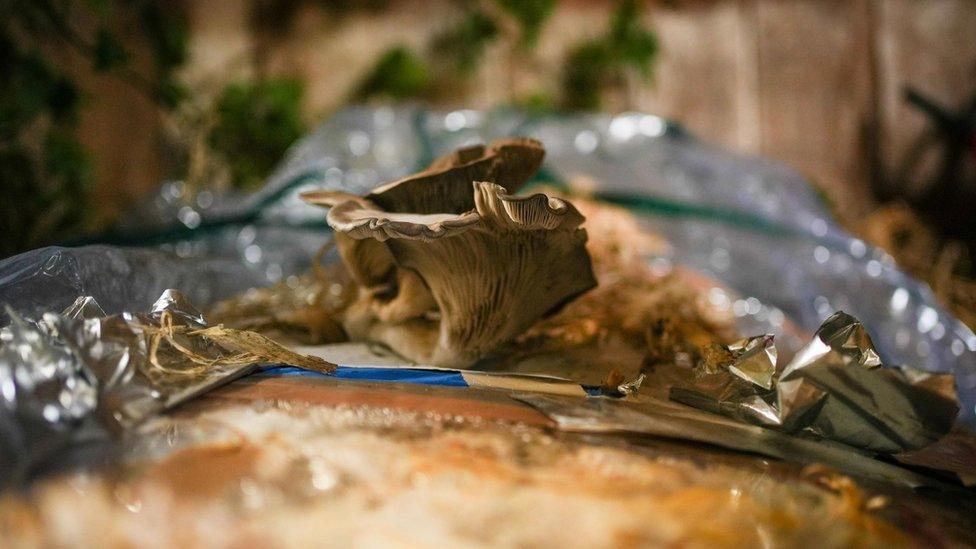
Mushrooms growing on the first full size prototype
The former design student developed the concept as part of his final year project at Cardiff Metropolitan University, where he set out to find a solution to the sport's environmental impact.
This is when Mr Davies started looking into fungi.
Mycelium is a compound that is found in a wide range of fungi. It forms a root-like structure that has wide ranging benefits across natural ecosystems.
Its properties have also been found to have significant potential for other man-made uses.
Mr Davies uses mycelium to act as a glue between a moulded, natural skeleton structure that he forms in a mould.
It is between the skeleton, made of materials like straw, that the mycelium roots grow to form a polystyrene-like material - one that is ideal for shaping a board.
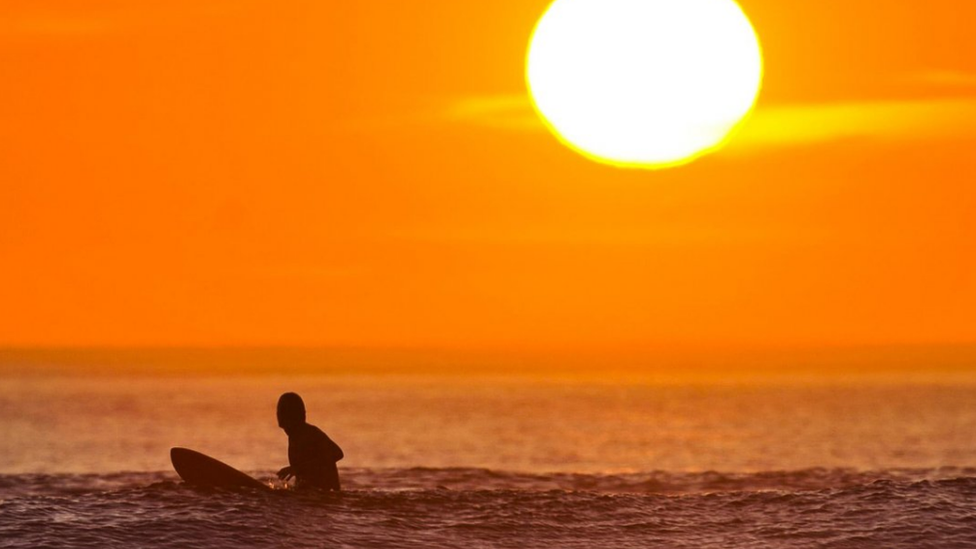
Of the thousands of surfboards made each year, 80% are not sustainable
Alone, mushrooms would not be enough. Without a waterproof coating, the organic material would simply wash away - not ideal when you're paddling for a wave.
To find a solution that will both aid the ride and leave no impact on the ocean, Mr Davies has tested a range of organic sealants like bees wax and linseed oil.
"The properties of mycelium compared to a foam such as polyurethane can be the same", he said.
"It will take a little bit of modification and the right species of mushroom to grow it but, eventually, I don't see any reason why mushroom boards couldn't be used in the top elite level of surfing, right down to beginner level."
The ecological impact of the sport is hugely important to the surfing community, who see the impacts of plastic pollution first hand.
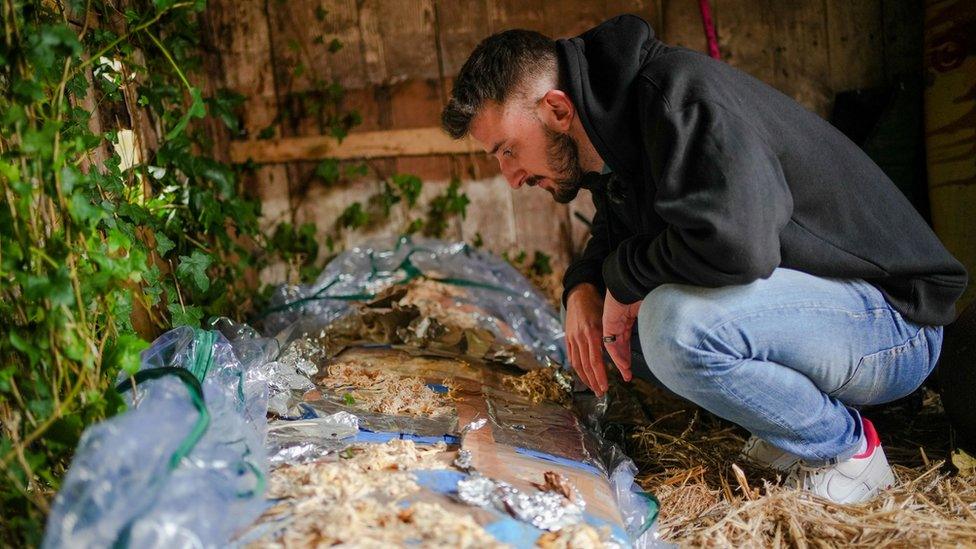
Steve Davies hopes mushroom boards can one day be used in elite level surfing
Izzy Ross, from campaign group Surfers Against Sewage, believes projects like Steve's are just what the community wants.
"The industry is not doing enough at all. It's fantastic to see these small projects and the great minds behind them trying to tackle this and I think it's fantastic work, but the problem is more systemic than that," she said.
"A lot of surfers and water lovers can see the damage that individual effects can have. It is something that most of us, I think, have a huge interest in - they're just waiting for the innovations to happen."
Of course, this innovation is of little significance if mushroom boards cannot be commercially produced.
When competing against established, fast-paced production lines, is it really viable?
Similar materials have been trialled by other board designers in recent years but, so far, they are yet to replace the staple board-making, plastic-heavy materials.
Mr Davies believes with the right backing and set-up, these boards could be the answer.
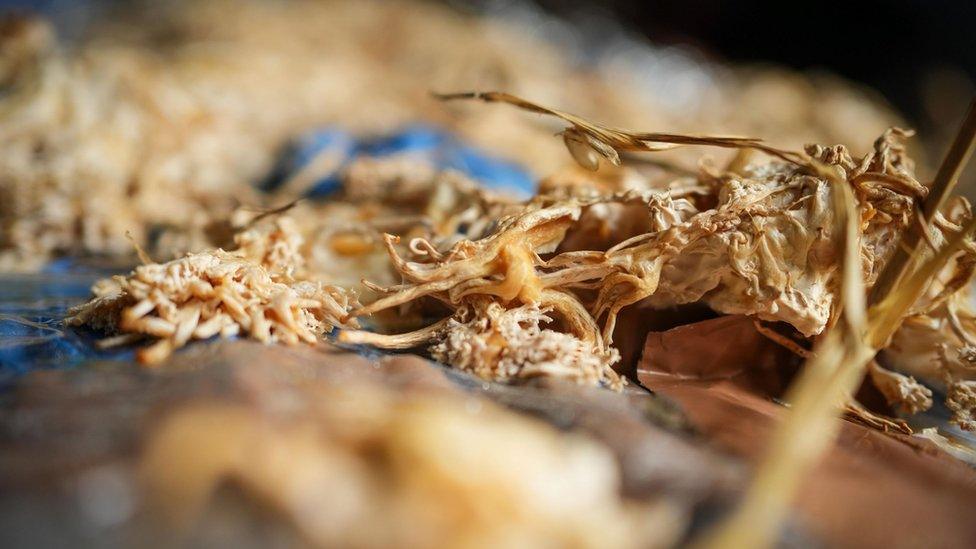
The mycelium roots grow to form a polystyrene-like material
"In the right conditions, we will grow a mycelium board in around 21 days," he said.
"The dream would be to make it the new norm. Connecting with nature would be the new design rules and a lot of things like that would be really cool."
Mr Davies added: "We're using the sea, we should give back to the sea and it should be a circular model."
Related topics
- Published10 August 2022
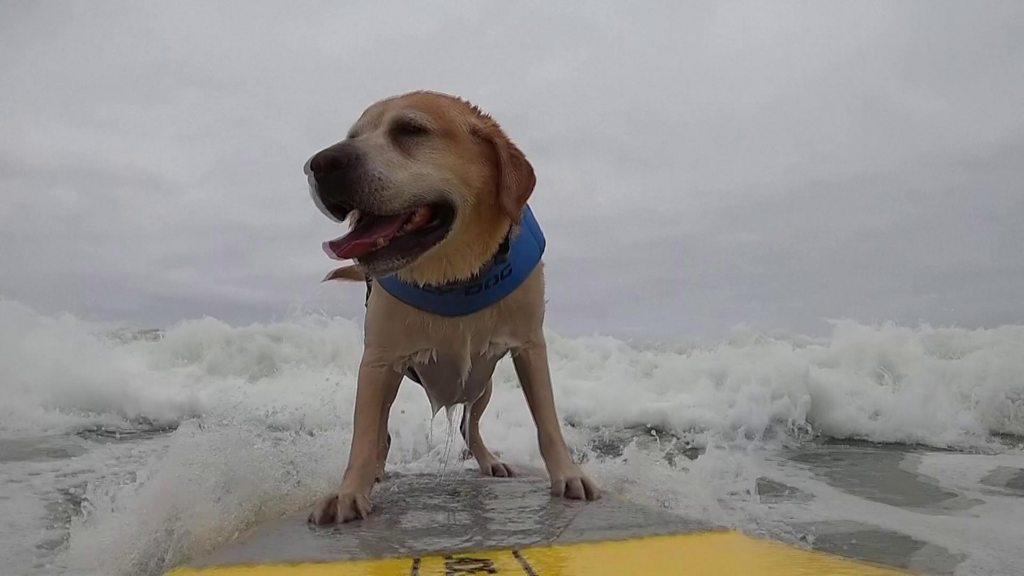
- Published5 December 2022

- Published24 June 2022
